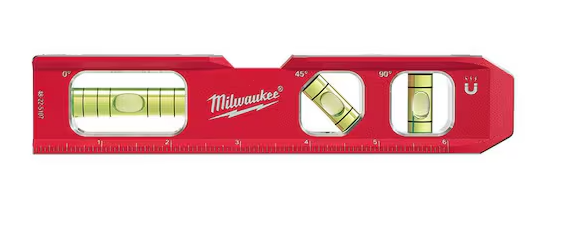
Levels are indispensable tools in construction, woodworking, and DIY projects, ensuring accuracy and precision in aligning surfaces and structures. From traditional spirit levels to advanced digital models, each type serves specific purposes based on the nature of the task at hand. Let’s delve into the various types of levels, their features, and applications.
1. Spirit Level (Beam Level)
The spirit level, often referred to as a beam level, is one of the most commonly used types. It features a sealed glass tube containing a liquid (typically alcohol) with an air bubble inside. When the bubble is centered between two markers, it indicates a perfectly level surface:
- Uses: Ideal for basic leveling tasks such as hanging pictures, installing shelves, and checking horizontal surfaces like countertops and floors.
2. Torpedo Level
The torpedo level, named for its compact size and torpedo-like shape, is designed for versatility and portability. It often includes additional features such as magnetic edges for hands-free operation and V-grooves for pipe alignment:
- Uses: Well-suited for tight spaces, plumbing work, and ensuring level and plumb lines simultaneously.
3. Self-Leveling Level
Self-leveling levels use internal mechanisms to automatically adjust and indicate true horizontal or vertical planes. They are particularly useful in situations where precision and speed are paramount:
- Uses: Commonly used in professional settings for quick and accurate leveling in construction, installation of doors and windows, and aligning partitions.
4. Digital Level
Digital levels utilize electronic sensors to measure angles precisely, displaying readings digitally. They often offer features like hold functions and audible alerts:
- Uses: Perfect for precise angle measurements, incline or decline calculations, and ensuring exact alignment in high-precision projects such as cabinetry and stair installation.
5. Rotary Laser Level
Rotary laser levels project a 360-degree horizontal or vertical laser beam onto surfaces, providing a reference line across entire rooms or outdoor spaces:
- Uses: Essential for large-scale leveling tasks such as grading, foundation work, and installing ceilings or wall tiles over extended areas.
6. Magnetic I-Beam Level
The magnetic I-Beam level features strong magnets embedded along its edges, allowing it to securely attach to metal surfaces without slipping:
- Uses: Ideal for steel construction, HVAC installations, and any project requiring hands-free leveling on metallic surfaces.
Choosing the Right Level for Your Project
Selecting the appropriate level depends on the specific requirements of your project:
- Accuracy: Consider the level of precision needed for your task.
- Environment: Determine whether you need a level that can withstand outdoor conditions or harsh environments.
- Functionality: Evaluate additional features such as magnets, laser projection, or digital displays based on the complexity of your project.
Levels are essential tools that ensure precision and alignment across a wide range of construction and DIY applications. Understanding the different types of levels available—from traditional spirit levels to advanced digital and laser models—empowers craftsmen and DIY enthusiasts alike to choose the right tool for every task. By mastering the use of these tools, you can enhance the quality and efficiency of your projects, achieving professional-grade results with confidence.
Cedar Hill St. Louis Jefferson County Olivette Kirkwood Ballwin Arnold Franklin County St Charles County Fenton High Ridge Dittmer Creve Coeur
